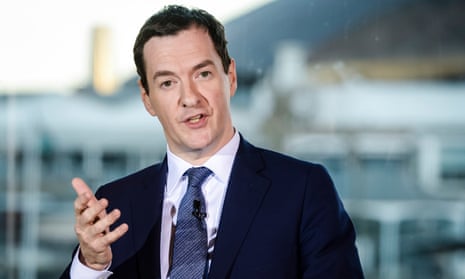George Osborne has already put in place legislation to prevent future governments racking up more debt, but consumer borrowing? Well, that’s another matter. Consumers who spend all their wages and then a bit more on top are George Osborne’s best friend.
Figures last week from the Finance & Leasing Association (FLA) documents a 17% surge in new consumer borrowing during the year to November 2015. The data covered credit cards, store cards, car loans and the dreaded second mortgage, which was so popular that the value of new loans jumped 31% during the year.
A study by the Bank of England reveals that a broader measure of consumer lending in November that includes bank overdrafts grew at its fastest rate since before the financial crisis, as consumers borrowed an additional £1.5bn. Then there is the housing market. The latest industry figures revealed a jump of 36% in the value of transactions in the year to November.
For those who worry about Britain’s recovery being built on a mountain of debt, the situation is getting worse. Among the worriers are Willem Buiter, global chief economist at the US bank Citigroup and a former member of the Bank of England’s interest-rate-setting committee. He told the Financial Times that the economy was relying on a source of activity that would eventually lead to a crash.
“Real estate has moved from boom to bubble. Debt levels in the public sector and the household sector are far too high. The fact that the household debt burden is well below its 2008 level is little comfort,” he said.
John Hawksworth, chief economist at the accountancy firm PwC, has the same concerns, saying the rise in debt-to-income levels “could sow the seeds of the next downturn later in the decade as and when interest rates eventually rise”.
The economic forecaster Fathom Consulting added that its “financial vulnerabilities indicator” showed the UK has a greater than evens chance of a banking crisis within the next five years once rising household debt is factored in.
Given these worries, why would the chancellor depend so heavily on profligate consumers? The answer is that he needs them when the dynamics of the economy are holding back the rate of GDP growth and a high rate of growth helps pay the bills.
The first headwind is the trend for older workers to prioritise paying down their debts over spending on the high street. In essence, the over-50s have used low interest rates to reduce their mortgages and outstanding credit card bills. Not all of them, of course, but most.
It is the baby boomers who account for most of the reduction in household debt after the crash. The Office for Budget Responsibility, which forecasts growth for the Treasury, estimates that household debt to GDP dived from a peak of 169% to nearer 140% after the crash and by last year had only nudged ahead to around 146%.
However, this trend has run its course. The latest prediction is that it will reach 163% of GDP by the end of the parliament, almost hitting its high watermark in 2008.
To keep the tills ringing, Osborne needed younger workers to take a happy pill. He gave them one in the form of help to buy, the mortgage subsidy that put a rocket under the housing market in 2014. Banks and private leasing firms did the rest, offering them an array of cheap finance to buy cars, furniture and other major items.
Another headwind faced by Osborne is the reluctance of businesses to invest. Since 2010 the OBR has forecast that spending by business on new equipment and processes would take on the heavy lifting of economic growth. It would also increase productivity and exports. But business has sat on its hands, preferring to increase output by employing more cheap labour.
The chancellor might have supported growth by taxing wealthy older people more and put the money into infrastructure to boost business investment, but he had an election to win and needed the votes of the over-65s.
So he has come to rely on consumer spending and the property market, which the OBR predicts will continue to boom uninterrupted, with 6% annual house price inflation for at least the next five years.
Osborne is not alone in thinking that any growth, wherever it comes from, is better than none. The Bank of England, despite documenting the sharp rise in borrowing, is split over whether to worry about it. Chief economist Andy Haldane warned last year that consumer credit, in particular personal loans, had been “picking up at a rate of knots”. He said the Bank’s financial policy committee might need to prevent lending spiralling out of control with a few choice interventions.
Other Bank officials dismiss these concerns, preferring to argue that the annual 3% rise in household debt, which has taken the total beyond £1.5 trillion, is covered by the average 3% rise in wages. In other words, borrowers have the capacity to meet rising interest bills from their income. Likewise, they point to rising property and pension wealth that more than offsets rising debt levels.
It means there is no emergency – but only as long as interest rates remain at near zero. Otherwise the direction of travel is just as it was before the 2008 crash. And the result is likely to be the same, if not worse.
